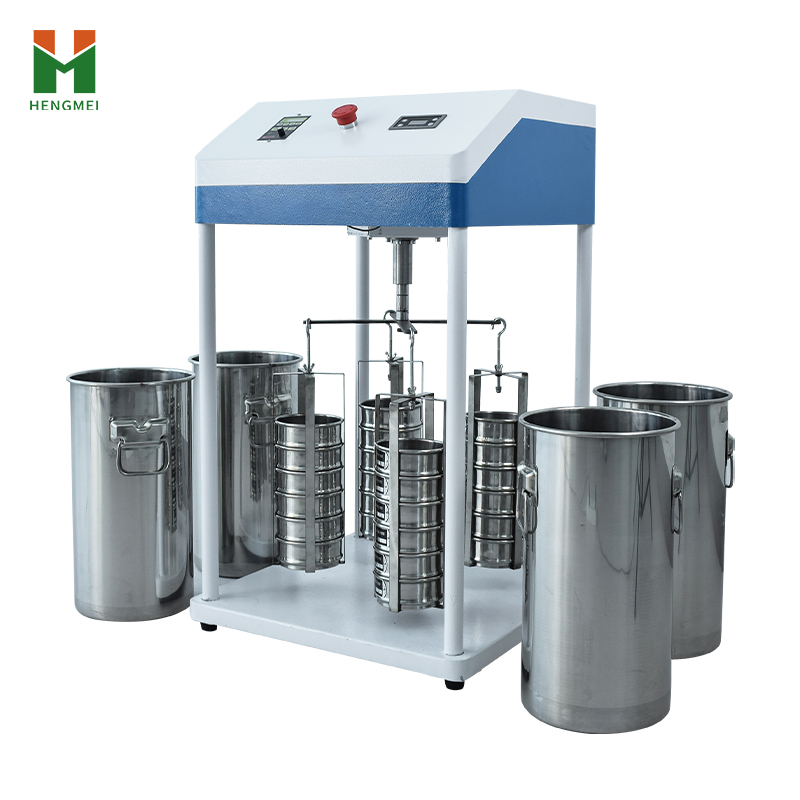Soil aggregates are the core indicators for evaluating soil structure stability and fertility, directly affecting soil moisture retention, nutrient supply, and crop root growth. The soil aggregate analyzer uses a combination of dry and wet sieves to accurately determine the quantity and distribution of soil mechanical stability and water stable aggregates, providing key data support for soil quality assessment, agricultural management, and ecological restoration. This article systematically elaborates on the importance of soil aggregate analyzer from the perspectives of technical principles, performance characteristics, application scenarios, and industry pain points, and combines practical cases to illustrate its value.

The importance of soil aggregate analyzer
Soil aggregates are the basic units of soil structure, and their stability and distribution are directly related to soil pore configuration, water movement, nutrient cycling, and erosion resistance. The traditional aggregate analysis method relies on manual operation, which has problems such as low efficiency, large errors, and poor repeatability. The soil aggregate analyzer achieves automation and precision in the analysis of dry (mechanical stability) and wet (water stability) aggregates through standardized mechanical oscillation and intelligent control, becoming an essential tool for soil science research and agricultural technology promotion.
Working principle and technological advantages
1. Core detection principle
Dry wet screening combined analysis method:
Dry screening analysis: Perform mechanical oscillation on air dried soil samples to determine the particle size distribution of mechanically stable aggregates (0.25mm~10mm).
Wet screening analysis: Mix the aggregates obtained from dry screening in proportion and shake them in water to determine the quantity and distribution of water stable macroaggregates, and evaluate the soil's resistance to water erosion.
Standardized operating procedures: Strictly follow internationally recognized methods to ensure data comparability and scientificity.
2. Technical advantages
High precision oscillation control: The vibration frequency can be adjusted from 0-56 times/minute, and the amplitude can be selected from 30mm/40mm/50mm to meet the needs of different soil types.
Intelligent safety design: equipped with multiple safety mechanisms such as emergency stop button, leakage protection, and locked rotor protection to ensure operational safety.
Efficient parallel processing: The cross shaped oscillating frame supports 4 sets of standard screens working simultaneously, greatly improving detection efficiency.
Digital operation interface: digital speed controller and timer, supporting precise setting and real-time monitoring of speed and time.
Durability and reliability: The all copper motor, thickened stainless steel water bucket, and industrial grade materials ensure long-term stable operation of the equipment.
Key technical parameters and performance indicators
Oscillation frequency: 0-56 times/minute (adjustable)
Oscillation amplitude: 30mm/40mm/50mm (customizable)
Standard sieve aperture: 0.25mm, 0.5mm, 1mm, 2mm, 3mm, 5mm (optional with other specifications)
Processing throughput: 4 sets of standard screens working synchronously
Timing range: 0~9999 minutes
Power supply and power consumption: AC220V/50Hz, 120W
Equipment size: 500mm × 500mm × 890mm (host)
Bucket specification: 200mm x 400mm (stainless steel with handle)
Safety protection: emergency stop switch, leakage protection, locked rotor protection
Application Fields and Solutions
1. Application scenarios
Agricultural Soil Quality Assessment: Classification of Farmland Fertility Grades and Evaluation of Degradation Soil Remediation Effectiveness.
Ecological restoration project: Monitoring of soil structure stability in vegetation restoration areas and mine reclamation areas.
Research and Education: Soil genesis, soil physics research, and university experimental teaching.
Environmental Monitoring: Evaluation of Soil and Water Conservation Project Effectiveness and Study on the Impact of Land Use Modes.
2. Typical solutions
Soil health diagnosis: Rapid assessment of soil erosion resistance through the proportion of water stable aggregates (WSA).
Optimization of cultivation methods: Compare the distribution of aggregates under different cultivation measures to guide the promotion of conservation tillage.
Organic matter management: Analyze the impact of organic fertilizer application on aggregate stability and optimize fertilization plans.
Industry pain points and coping strategies
1. Insufficient standardization of operations
Pain point: Inconsistent manual operation intensity and frequency, resulting in poor data repeatability.
Countermeasure: The soil aggregate analyzer provides standardized oscillation frequency and amplitude to ensure comparability of results.
2. Low detection efficiency
Pain point: Traditional methods have a small sample volume and long processing time.
Countermeasure: 4-channel synchronous oscillation design, processing 4 sets of samples at once, increasing efficiency by 300%.
3. Safety hazards
Pain points: Risks such as motor overload and leakage affect operational safety.
Countermeasure: Integrate stall protection, leakage protection, and emergency stop switch to achieve comprehensive safety protection.
4. Data accuracy depends on experience
Pain point: Manually determining the endpoint can easily introduce subjective errors.
Countermeasure: Digital control and timing function to eliminate human operation deviation.
The soil aggregate analyzer combines standardized mechanical oscillation and intelligent control technology to achieve automation, precision, and high-throughput analysis of soil aggregates, effectively solving the pain points of traditional methods in terms of efficiency, consistency, and safety.
Article address:https://www.soiltesting.cn/news2/126.html






